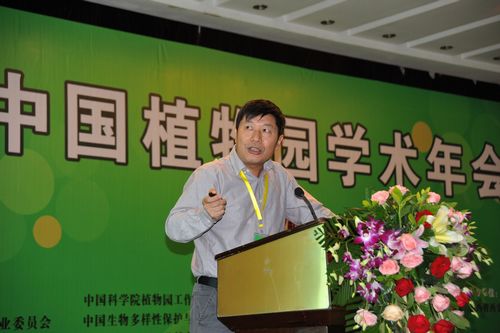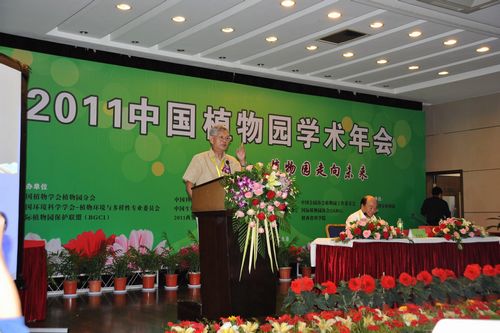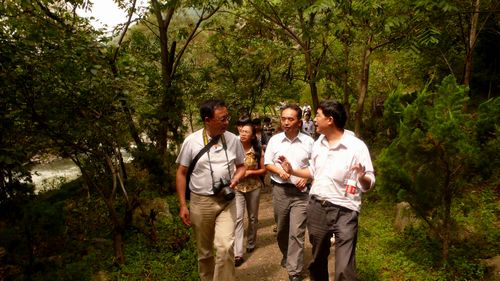Themed with “Botanical Gardens: Moving Forward to the Future”, the National Botanical Gardens Conference & Academic Meeting 2011 opened on September 5 in Xi'an, capital city of Shaanxi Province. Over 400 representatives of botanical gardens and international organizations gathered there. Dr. Chen Jin, director of XTBG, headed up a 13-person group to attended the meeting.
The meeting covered such topics as how to implement China Biodiversity Conservation Strategy and Action Plan, plant diversity and urban ecological construction, protection and utilization of plant resources in the future 20 years, how to construct modern botanical gardens scientifically, plants and human life, tourism economy and development of botanical gardens, popular science display and dissemination in botanical gardens, etc.

Dr. Chen Jin delivered a keynote speech entitled “Botanical gardens should conduct more scientific research on living collections”, providing suggestions on studies of living collections.

Dr. Chen Jin delivers a keynote speech
Prof. Xu Zaifu, emeritus professor and former director of XTBG, presented the academic thoughts of Prof. Cai Xitao – pioneer of plant resource science, through his works and practice.

Prof. Xu Zaifu talks about Cai Xitao's academic thoughts
Some other XTBG participants made presentations.
The meeting was organized by the Chinese Association of Botanical Gardens, International Association of Botanical Gardens (IABG), Botanical Gardens Conservation International (BGCI), Xi'an Botanical Garden, etc.
After the meeting, Prof. Li Qingjun, deputy director of XTBG, headed XTBG participants a field tour toQinling National Botanical Garden.

Visiting Qinling National Botanical Garden
About Qinling National Botanical Garden is the largest botanical garden which is 4 times bigger than the Australia Botanical Garden and it has the most complete function in the world.
The Botanical Garden is 3000 meters high. Plains, hills and mountains form a complete ecological system in the garden. There are 13 rivers and natural landscapes of valleys, waterfalls, stones and forests. The garden has the function of scientific research, scientific education, biological diversity protection and tourism.
There are four sections in the garden. Section A have plants from the temperate climate and the north part of the subtropical climate. Section B is for experiments for saving and cultivating rare and endangered species like the giant panda and the snub-nosed monkey. Section C is for supervision of the environment and rebuilding the destroyed areas. Section D is divided into the east part and the west part. There is a golf field, and a children’s amusement park in the east part. In the west part, there is a natural farming protected zone and a Taoist cultural protected zone. These are all built for multi functions of the Qinling National Botanical Garden.
(By Jack Li, http://blog.chinatraveldepot.com/2011/08/qinling-national-botanical-garden/)




